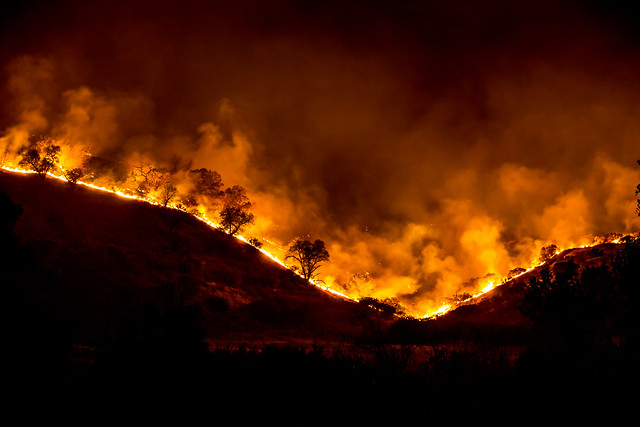Wildfires: How Do They Affect Our Water Supplies?
Published August 13, 2019

Just as wildfires impact air quality, they can also affect the quantity and quality of water available. Water supplies can be adversely affected during the active burning of a wildfire and for years afterwards. During active burning, ash and contaminants associated with ash settle on streams, lakes and water reservoirs. Vegetation that holds soil in place and retains water is burned away. In the aftermath of a large wildfire, rainstorms flush vast quantities of ash, sediment, nutrients and contaminants into streams, rivers, and downstream reservoirs. The absence of vegetation in the watershed can create conditions conducive to erosion and even flooding, and naturally occurring and anthropogenic substances can impact drinking water quality, discolor recreational waters, and may potentially contribute to harmful algal blooms.
Due to the unpredictable nature of wildfires, drinking-water utilities face a considerable challenge to develop plans and strategies for managing floods and treating polluted water. Information and tools are needed to help water storage and treatment managers better prepare for wildfire impacts.
Research conducted by Dr. Mussie Beyene, an EPA postdoctoral researcher working with EPA ecologist Dr. Scott Leibowitz, has examined pre- and post-wildfire data on streams in the western United States to understand how wildfires change the daily flow of sediment and water in streams. One of the reasons he focused on the western states is because 65% of fresh water supply in the region originates from forested watersheds, which, depending on conditions, can be highly susceptible to forest fires.
“How do wildfires change the amount of water and sediment flowing into a stream?” asks Beyene. “If you are a municipal water supply manager, you are most concerned with changes in the magnitude, frequency and timing of extreme water discharge and sediment—what are the highest and lowest amounts of water and sediment that flow into a stream after a wildfire—because your water treatment plants and your water storage systems may not be built to accommodate them.”
Beyene found that there is a possible increase in stream water discharge following a wildfire. For streams in the northwest, this can be followed by fewer episodes of very low water levels. In contrast, for streams in the southwest, the increase in discharge is followed by more episodes of very high water levels. Additionally, the timing of peak flood events shifted towards late winter-early spring for regions that receive the majority of their water from winter snowpack. In terms of water quality, Beyene also found a significant increase in the amount of suspended sediments in streams after a wildfire event.
Beyene’s research is just one aspect of EPA’s larger investigation into the impact of wildfires on water resources. Researchers are working to determine whether pollutants, like mercury and lead left over from the 20th century mining boom and other old industries, more easily find their way into water after wildfires. They are also exploring ways to protect water quality from wildfires through watershed management. Information generated from these studies will be used to protect the quality of our water supplies and the essential benefits they provide.
Learn more about our research into wildfire impacts on water and the environment.
